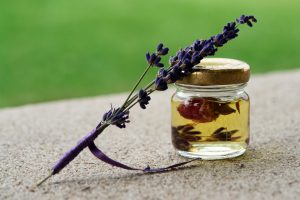clinical aromatherapy

What is it?
Aromatherapy is the practice of using volatile plant oils, including essential oils, for psychological and physical well-being.
Essential oils, the pure essence of a plant, have been found to provide both psychological and physical benefits when used correctly and safely. There are over 90 essential oils. Absolutes, CO2s and Hydrosols are also commonly utilized in aromatherapy. Although essential oils, CO2 extracts and absolutes are distilled in different manners, the term essential oil is sometimes used in writing as a blanket term to include CO2s and absolutes.
See “Categorizing Essential Oils”
In addition to essential oils, aromatherapy encourages the use of other complementary natural ingredients including cold pressed vegetable oils, jojoba a liquid wax), hydrosols, herbs, milk powders, sea salts, sugars (an exfoliant), clays and muds.
Products that include synthetic ingredients are frowned upon in holistic aromatherapy. It is important to note that perfume oils also known as fragrance oils (and usually listed as “fragrance” on an ingredient label) are not the same as essential oils. Fragrance oils and perfume oils contain synthetic chemicals and do not provide the therapeutic benefits of essential oils.
How it works
Aromatherapy can help ease a wide assortment of ailments – easing aches, pains & injuries, while relieving the discomforts of many health problems.
Aromatherapy also acts on the central nervous system – relieving depression and anxiety, reducing stress, relaxing, uplifting, sedating or stimulating, restoring both physical and emotional well-being.
- Direct Inhalation – bowl of steaming water, nasal inhaler
- Indirect Inhalation – room diffuser
- Topical Application – massage, foot/sitz/tub bath, compress
- Gargle
- Infusion (tea)